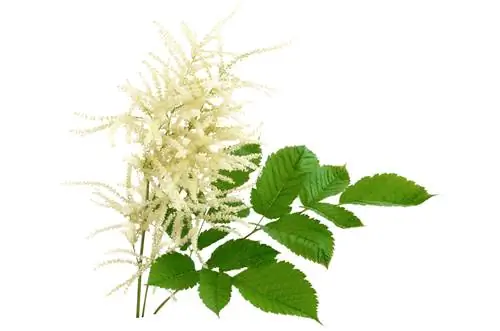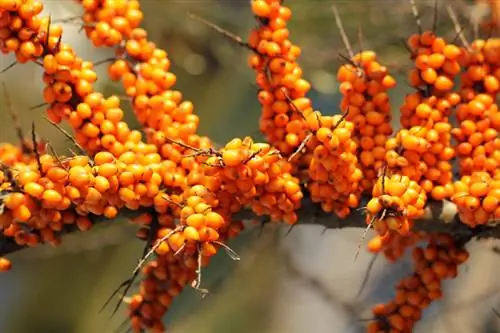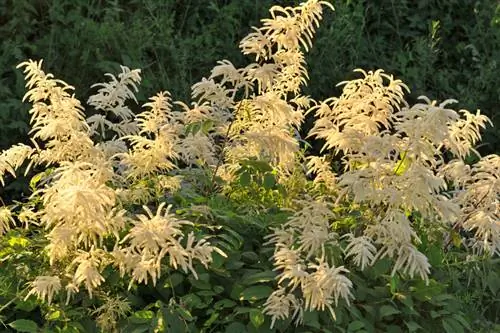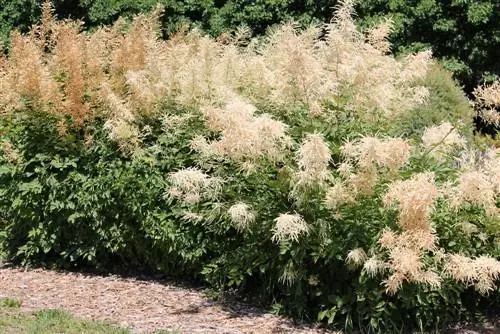- Author admin [email protected].
- Public 2023-12-16 16:46.
- Last modified 2025-01-23 11:20.
The easy-care and long-lasting goat's beard does not require any complicated cutting and is therefore very suitable for beginners and gardeners who don't have much time left for gardening but love decorative and unusual plants.

When and how should the goat's beard be pruned?
The ideal time for pruning goat's beard is either in late autumn or early spring. Cut the plant back to just above the ground to encourage new growth. To prevent seed formation, remove the flower spikes immediately after flowering.
The better the location you choose, the less care the goat's beard needs. He prefers a partially shaded or shady place, preferably under trees or in a darker corner of the garden. The soil should be slightly moist, nutrient-rich and humus-rich, but permeable so that waterlogging does not form.
Since the forest goat's beard grows quite large, it requires a relatively large amount of space. This means the impressive flower spikes are particularly effective. Did you know that the forest goat's beard has male and female plants? You can tell them apart by the color of the flowers; the female ones are white, while the male ones are cream-colored.
When is the best time to prune?
The goat's beard can be cut back in both late autumn and early spring. Choose the time that best suits your needs. Not every garden owner likes the view of a “bare” garden in winter, while some like it “tidy and clean”. There is no need to argue about taste and the forest goat's beard accepts cutting both variants.
How to trim the goat's beard
The forest goat's beard is quite persistent and forms strong roots. This makes it relatively insensitive to possible cutting errors. Cut your goat's beard close to the ground, it will sprout again quite reliably. If you want to prevent seeds from forming, cut off the flower spikes just above the foliage immediately after flowering.
Cutting forest goat's beard for the vase
The impressive flower spikes of the forest goat's beard are not only a beautiful sight in the garden, they are also ideal as decoration for living spaces. The panicles can be up to 50 cm long, and the vase can be correspondingly large. Floor vases, for example, are also suitable.
The most important things in brief:
- Pruning in late fall or early spring
- cut back close to the ground
- good cut flower for the vase
- To prevent seed formation, cut back the flower panicles immediately after flowering
Tip
Cut your forest goat's beard for the vase - a truly exclusive sight!






